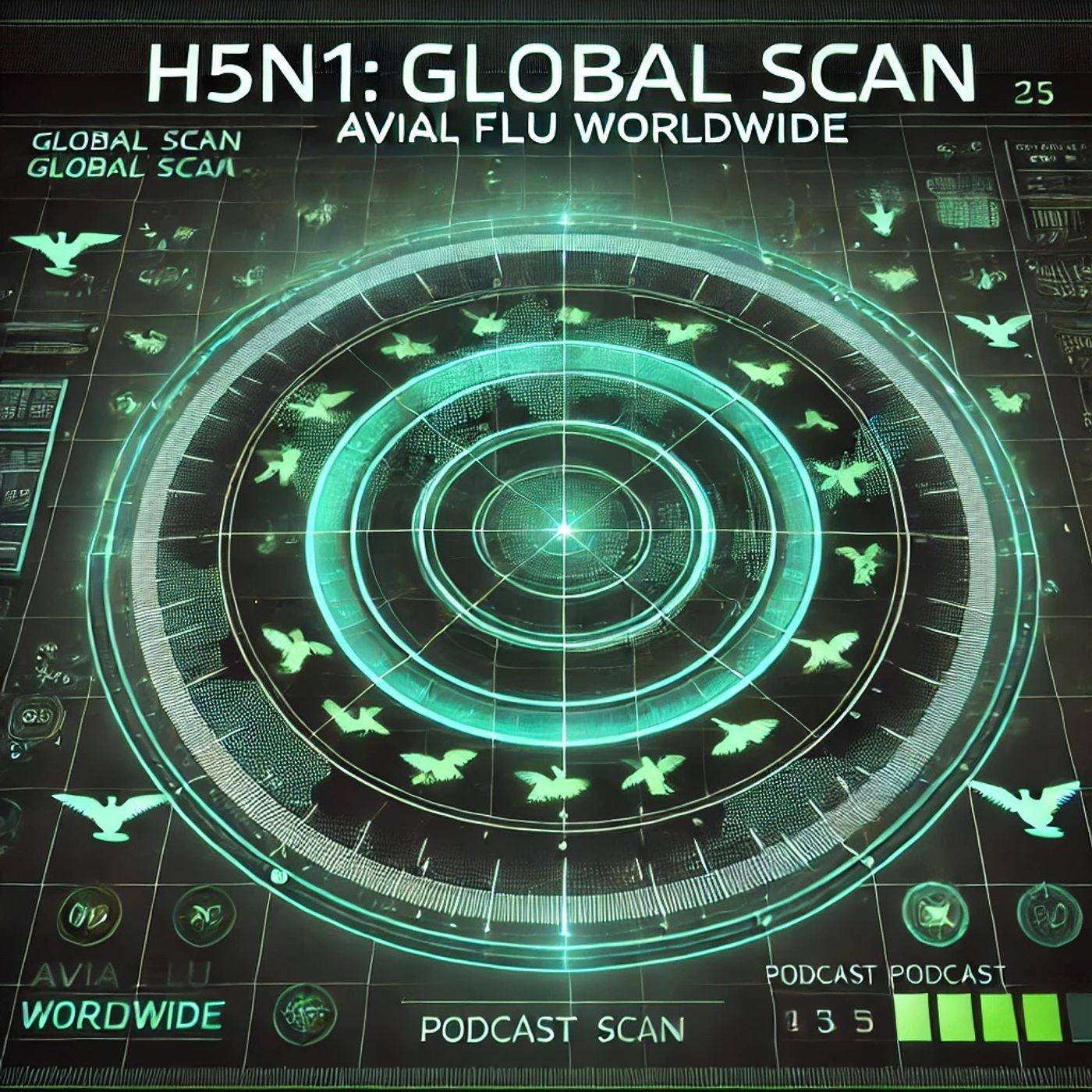Podcast Episode Details
Back to Podcast Episodes
H5N1 Avian Flu Spreads Globally: Experts Warn of Pandemic Risk as Virus Jumps Between Species and Continents
This is H5N1 Global Scan: Avian Flu Worldwide. I’m your host, and today we’re examining how the highly pathogenic avian influenza H5N1 is reshaping global health, trade, and scientific strategy as we enter late 2025.
H5N1 has extended across every continent except Australia, with recent significant activity in the Americas, Europe, Africa, Asia, and Oceania. The Pan American Health Organization notes that since 2022, nineteen countries in the Americas, including the United States, Canada, Brazil, and others, have reported over 4,700 animal outbreaks. Human cases remain rare but concerning—seventy-one cases were identified in the US alone since 2024, mainly among people exposed to poultry or dairy cattle. The US and Canada have seen unprecedented outbreaks in dairy cattle herds, marking a new phase and raising fears about interspecies transmission.
Turning to Europe, the European Centre for Disease Prevention and Control reported 743 new bird outbreaks across thirty-one countries this winter, with most cases involving waterfowl and backyard flocks. The disease has spilled over into wild carnivores and domestic cats, underlining its growing ecological reach. In Southeast Asia, countries like Cambodia and India continue to endure sporadic but deadly human infections, with several high-profile deaths this year linked to close contact with sick poultry.
Across Africa, outbreaks in wild and domestic birds persist, particularly in Egypt and West African nations, often driven by seasonal migratory patterns, which also threaten the Middle East. Oceania has seen fewer outbreaks, but ongoing biosecurity vigilance remains essential.
The World Health Organization and the Food and Agriculture Organization describe H5N1 as a serious and evolving zoonotic threat. WHO data reports a 48–49% fatality rate among confirmed human cases since 2003, the vast majority linked to direct animal exposure. They stress that, despite limited human-to-human transmission so far, the virus’s high virulence, expanding host range, and ability to mix with seasonal flu strains make it a constant pandemic risk.
International research is accelerating. The United States and European Union have launched joint surveillance of genotypic changes, especially following the emergence of new viral strains in cattle and wild mammals. Asian labs are sequencing circulating strains at record pace, seeking mutations that might enable easier spread to humans. Collaborations through WHO’s Global Influenza Surveillance and Response System and the FAO Emergency Prevention Systems are supporting real-time data sharing and joint field investigations.
On global containment, approaches differ by region. The US has imposed strict culling protocols, poultry movement controls, and expanded farm worker vaccination efforts. In contrast, many countries in Southeast Asia rely more on market surveillance and poultry vaccination, often hampered by resource constraints. The EU balances rapid culling with targeted poultry vaccination and wildlife monitoring, while many African states focus on community outreach and early warning.
Trade disruptions have been severe, with major poultry-exporting countries facing bans and supply chain turmoil. The World Organization for Animal Health promotes harmonized trade standards but acknowledges national measures often diverge.
Vaccine development is advancing but uneven. Several candidate vaccines for humans are in late-stage trials in North America and Asia. Veterinary vaccines—crucial for poultry—have seen more deployment, but virus evolution complicates immunity and supply.
As 2025 ends, H5N1’s trajectory highlights the need for agile scientific collaboration, transparent communication, and equitable vaccine access globally. Containment demands integration across sectors, from animal health to human medicine.
Thanks for tuning in to H5N1 Global Scan:
Published on 4 days, 16 hours ago